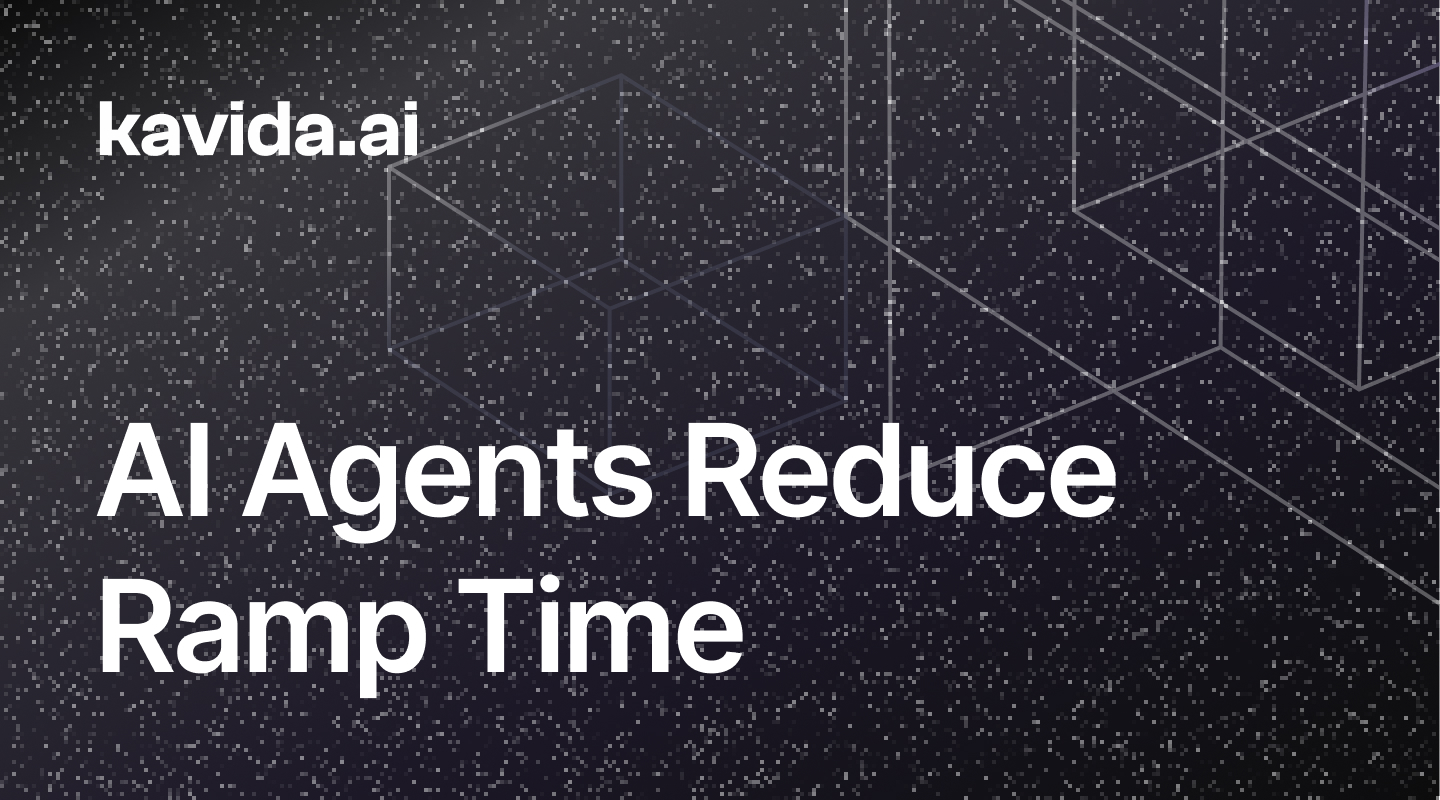
ANNOUNCEMENT
QAD Redzone acquires Kavida — our Agents have joined the Champion AI family
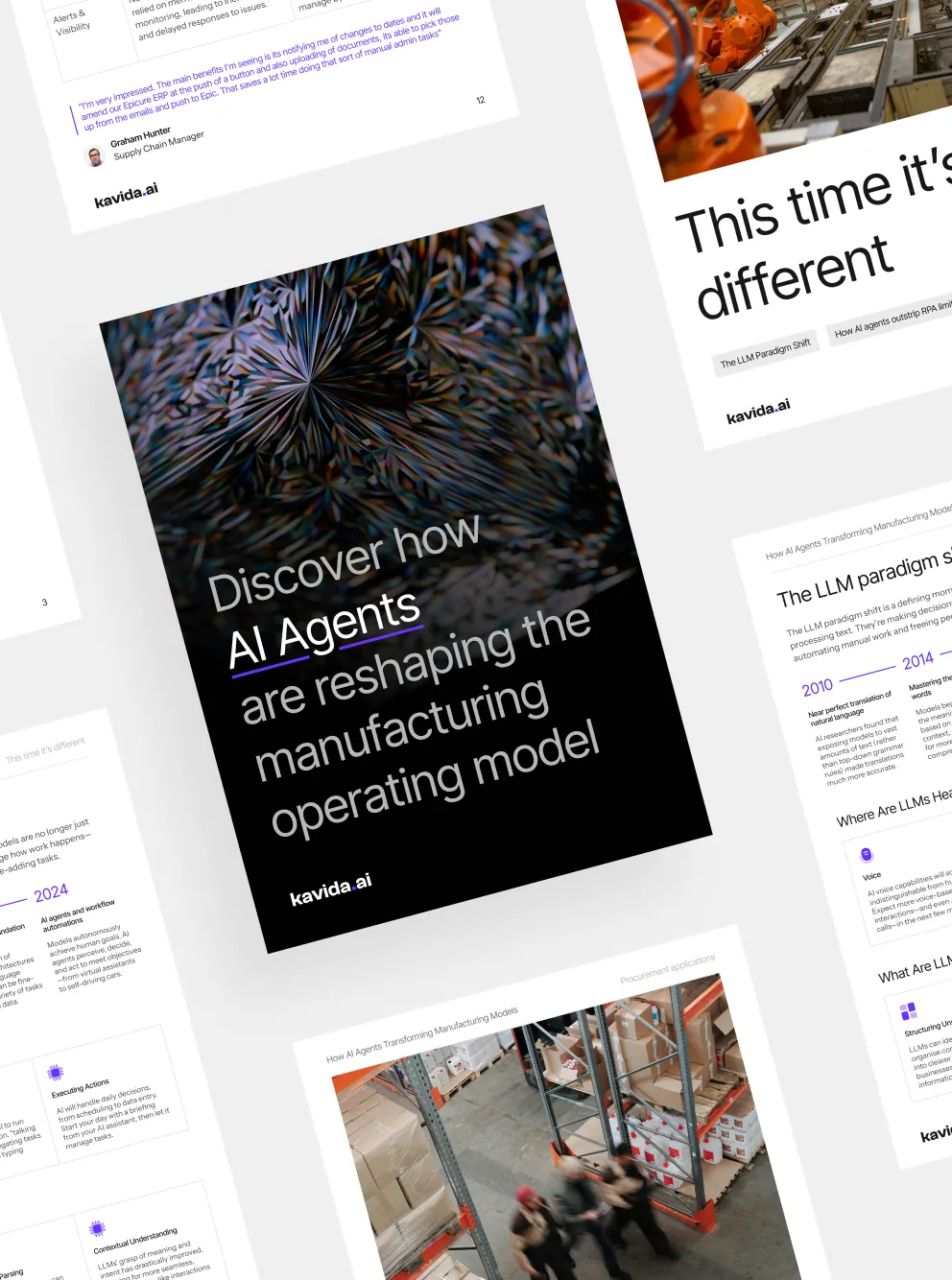
Discover how AI agents are reshaping the manufacturing operating model

Hi, I’m Alison!
Share your details, and I’ll give you a call in minutes to see how we can assist.

Microsoft Copilot Is Not an AI Strategy - How to Think About Horizontal vs Vertical AI Strategy
August 12, 2025
7 min read
Author:

Anam Rahman
CEO & Co- Founder, Kavida.ai
Author:

Anam Rahman
CEO & Co- Founder, Kavida.ai
Microsoft Copilot is not
an AI Strategy: How to Think About Horizontal vs Vertical AI Strategy
Table of Contents
ToggleEnterprises that mistake Microsoft Copilot, or any other horizontal AI layer for a strategy, end up with busy IT teams, half-automated workflows and frustrated end-users. Horizontal suites are superb plumbing, they connect apps, expose APIs and supply generic models, but they stop short of end-to-end results and achieving business outcomes.
Only domain-specific (“vertical”) agents deliver those outcomes today. Kavida’s Procurement Agent is the benchmark vertical solution for supply-chain workflows. It reaches 97 % efficacy, custom trained on millions of buyer-seller communications and built specifically to complete jobs-to-be-done in supply chain while also closing the loop back into ERP systems.
Capability > Convenience
When CEOs and CFOs convene to score AI options, Microsoft inevitably tops the shortlist: it’s already licensed, the learning curve is gentle, and the marginal cost per seat is almost invisible on the P&L. Yet “easy and cheap” is not a destination, it’s merely the on-ramp. Copilot-class platforms excel at horizontal hygiene tasks, but they plateau long before the transformation targets in procurement, finance or quality. To convert capital outlay into hard ROI, leadership must pair that horizontal backbone with vertical, domain-specific agents, tools pre-trained on the messy workflows and industry shorthand that generic models miss. In practice, the winning AI portfolio is layered: platform for plumbing, specialist agents for outcomes. Anything less is simply funding convenience, not competitive advantage.
What is a Horizontal Agentic Platform?
Horizontal agentic platform (think Microsoft Copilot, N8n, Agentic Studio) spreads across all your enterprise apps and data stores, giving IT a set of “Lego bricks” to prototype agents for any task — great for quick wins on simple data workflows. Its strength is breadth and ease of access, but it stalls the moment a workflow depends on messy, domain-specific inputs. Accuracy plateaus at 50-70 %, forcing humans back into the loop and erasing ROI.
What is a Vertical Agentic Platform?
A vertical agentic platform, by contrast, is purpose-built for a single role and workflow, Kavida’s Agent PO for post-order procurement, for example, arrives pre-trained on millions of real documents and embeds the cadence rules, document logic and compliance guard-rails that generic models lack, delivering 99 % first-pass extraction and a human-in-the-loop QA loop that surfaces 100 % accuracy before it writes back to SAP or Oracle. Horizontal platforms provide the plumbing and governance every enterprise needs, vertical platforms supply the depth and outcome ownership that actually moves P&L metrics.
The winning AI portfolio layers the two: horizontal for reach, vertical for results
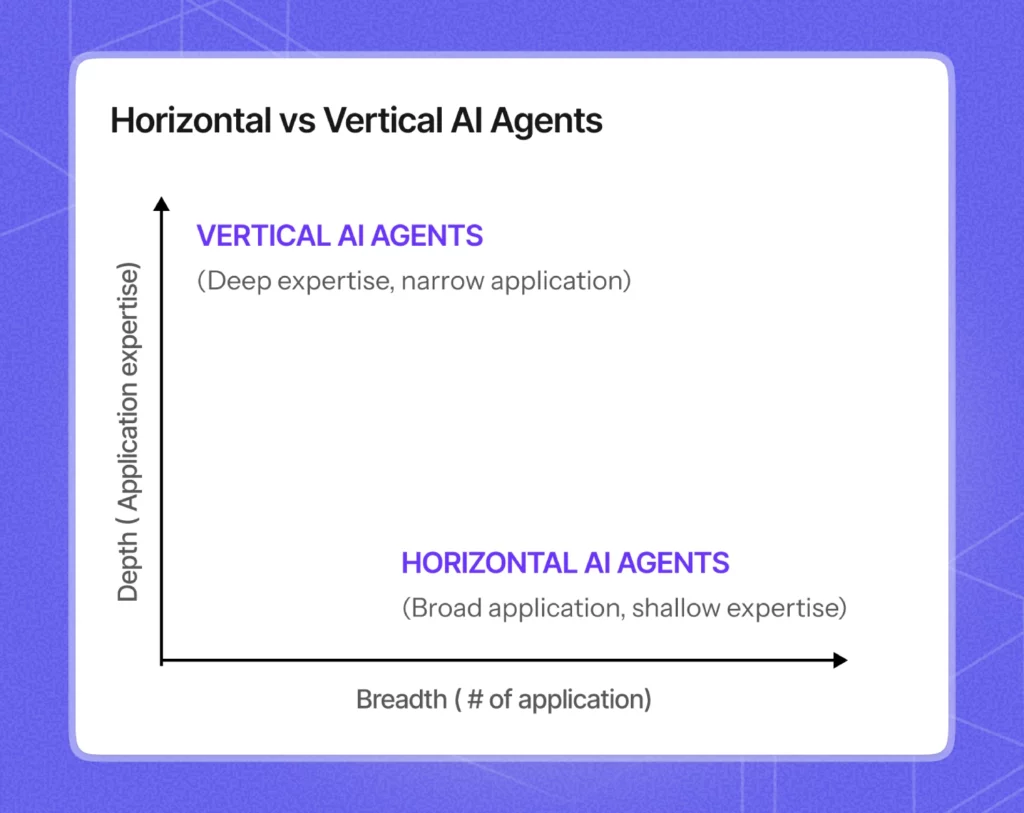
Unique Capabilities of Kavida’s Vertical Platform
Trained for the messy inbox — and therefore resilient to constant change.
Kavida’s agent has been exposed to millions of real supplier emails, PDFs, order-book spreadsheets and even smartphone screenshots, so it recognises whatever format lands in the buyer’s inbox tomorrow as easily as what arrived yesterday. It hits 99 % first-pass extraction and routes the ambiguous remainder through a human-in-the-loop QA loop that surfaces 100 % clean data before anything touches SAP or Oracle. Horizontal platforms, by contrast, perform well only on neat, structured data that rarely exists in procurement. Throw them a supplier’s red-lined PDF or a split-delivery note and accuracy craters, forcing buyers back into manual copy-paste.
Understands the language of buyer–seller communications, not just the words.
Aerospace shorthand such as “18 pcs 19/3 AS HAZ”, “balance 16/5 RCA”, embedded Incoterms, lot numbers hidden in filenames, Agent PO parses them all because its language models were fine-tuned on procurement dialogue. It knows that “AS HAZ” flips hazardous-goods workflows, that a new “balance” line requires a fresh expected-delivery date, and that silence after 48 hours triggers an automatic chase. Generic horizontal tools read these messages statistically. They may extract a date or a quantity, but they miss the intent, the compliance flags and the downstream ERP updates that protect margin.
Delivers job-to-be-done automation from trigger to outcome.
Each automation in the Kavida platform is wired to finish a specific objective — e.g., “confirm PO line,” “collect compliant CoC,” “update revised ship date”and owns every step: data capture, validation, supplier follow-up, ERP write-back and exception escalation. The result is an autonomous, closed loop that clears ~80 % of a buyer’s daily workload. Horizontal products can suggest an email draft or surface a dashboard reminder, but still rely on humans to drive the rest of the journey. The workflow never truly completes, and the KPI improvement never fully arrives.
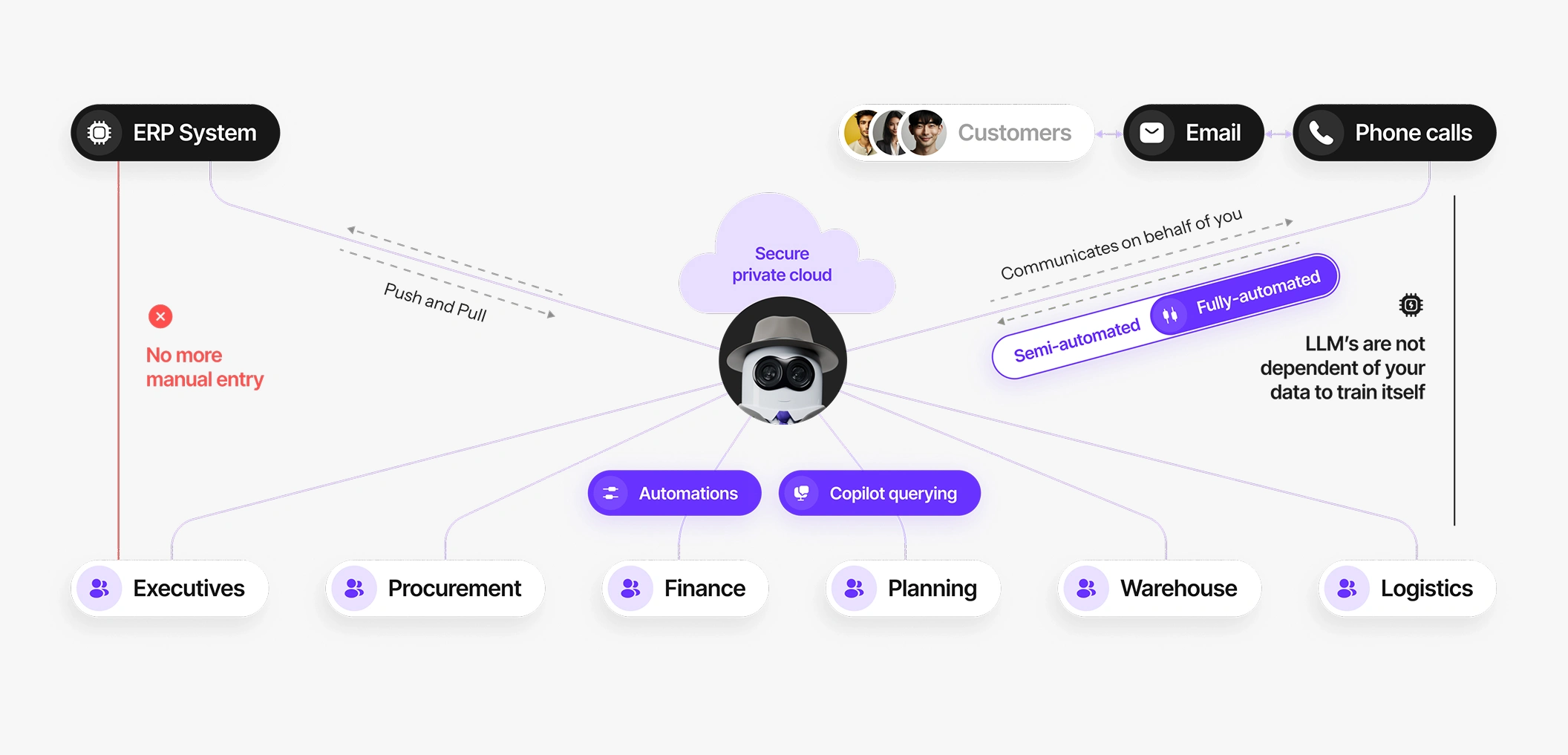
Achieving Business Outcomes Requires Vertical
These capabilities become critical to realising business outcomes and an impact on the P&L.
Efficacy must hit 100 % — anything less doubles the work.
In procurement, a model that is 70% right still forces buyers to reread every email and PDF, re-type corrected dates into SAP and explain exceptions to auditors. That “shadow workload” wipes out the promised efficiency and even adds steps. Only a custom-trained vertical agent, engineered to achieve 99% extraction on first pass and close the remaining gap via a human-in-the-loop QA loop, reaches the 100% data fidelity that allows true end-to-end automation and lets staff finally stop copy-pasting.
Domain expertise is the multiplier that turns AI into a business outcome.
Horizontal platforms offer generic language models, but they don’t know why aerospace order books switch from monthly to weekly, what “AS HAZ” means for duty codes, or which certificates must accompany which part. Vertical agents embed that tribal knowledge, cadence rules, compliance guard-rails, supplier slang, so they can interpret each message correctly and trigger the right downstream actions. Without that workflow-level expertise, accuracy stalls, trust erodes and the promised ROI never materialises.
Closed-loop job completion is the only path to measurable ROI.
A specialist agent doesn’t just read data. It validates, decides, writes back to ERP and escalates exceptions — owning the whole “job to be done”. That closed loop is critical for hitting KPIs such as on-time-in-full delivery or reduced expedite spend. Horizontal tools surface suggestions but leave humans to finish the transaction, so enterprise never captures the full benefit. Vertical platforms hard-wire the final mile, turning AI from a helpful assistant into a fully accountable performer.
Microsoft Copilot is not
an AI Strategy: How to Think About Horizontal vs Vertical AI Strategy
Table of Contents
ToggleRelated articles

How AI Agents Reduce Ramp Time and Prevent Knowledge Loss
If you’ve ever onboarded someone into a supply chain role, you know the first few weeks feel less...
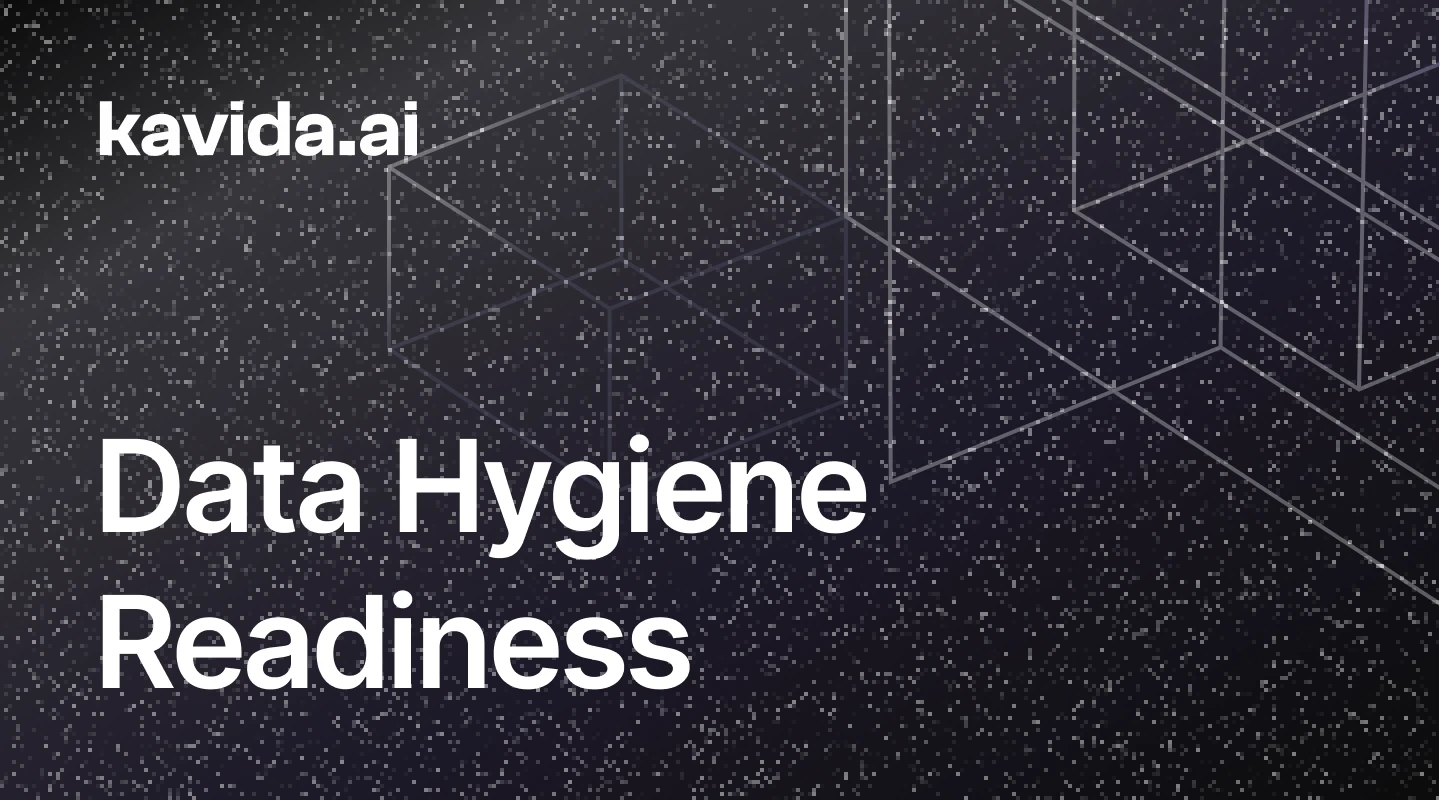
Data Hygiene And The Importance Of Clean ERP Data For Manufacturers
Imagine this: your company invests in a cutting-edge ERP system to streamline every process—from supply chain logistics to inventory management.
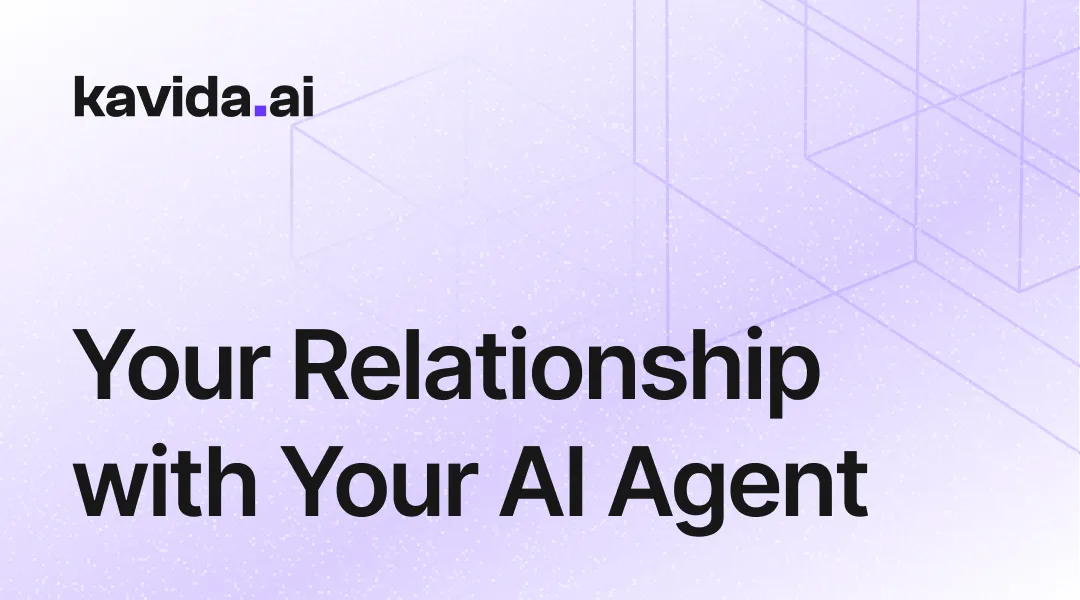
Why AI Will Be Your Most Valuable Teammate – And How to Build That Relationship
And that’s the exciting part. Because from here on out, it only gets better — smarter, faster, more capable....
